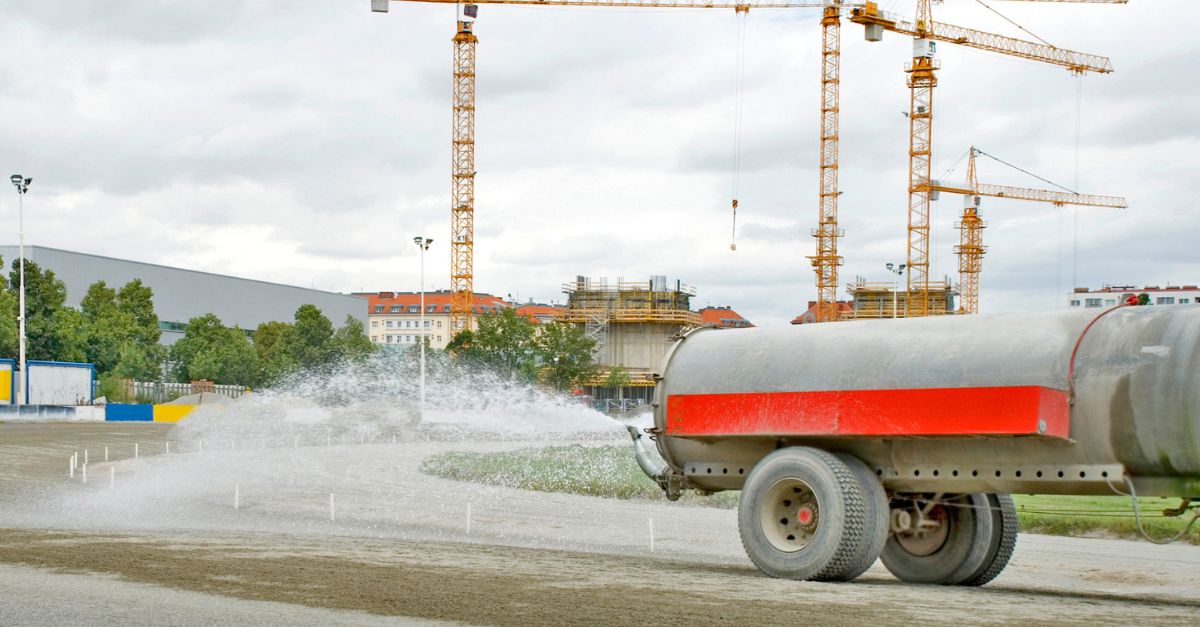The release of dust and noise from construction sites can have a significant impact on public health and the environment, as airborne dust particles affect air quality and the constant noise is a nuisance to citizens and residents living near the site.
Environmental monitoring is therefore essential, but what exactly does it consist of?
Monitoring dust emissions from construction sites – why is it important?
Dust generated during construction activities contains a mixture of fine particles of various sizes that are harmful to health and also contribute to air pollution.
Activities involving the cutting and crushing of materials, drilling of walls or floors, polishing or surface finishing, demolition of existing structures or simply the handling and transport of materials are a source of dust and noise which, in addition to posing a health risk to workers and increasing particulate emissions, will require clean-up operations at additional cost.
How to control dust on construction sites?
There are various methods to control dust emissions on construction sites to minimise environmental impacts and protect public health.
Among the most commonly used dust control techniques is the application of water through irrigation systems, an effective method that helps to maintain moisture in the soil and materials, thus preventing the release of particles into the air.
It is also common to equip machinery and vehicles with water spray systems that can control dust emissions during operation – a very effective approach, especially in road construction and earthmoving activities.
Another widely used solution is the use of physical wind barriers, such as fabric fences or temporary walls, which can help reduce wind-dispersed dust, especially in areas where weather conditions favour the spread of dust.
For activities such as cutting, demolition or excavation, specific dust control measures should be implemented, which may include the use of containment systems, vacuum systems and wetting techniques.
In order to know whether these dust control measures are effective on construction sites, it is essential to monitor air quality continuously, focusing on the control of fine particles such as PM 10 and PM 2.5.
The results of this monitoring will allow control strategies to be adjusted as necessary.
An example of this is water savings when irrigation and sprinkler systems are used: by being able to see in real time how particulate matter emissions fluctuate, the water flow can be adjusted allowing an optimal balance between irrigation/sprinkler and emission limit.

Noise control measures in construction
Construction is one of the noisiest sectors due to the nature of the work carried out.
As a result of this work, not only are dust emissions generated, but also high noise levels, which are a real nuisance for both workers and neighbours in the area, even affecting the environment.
Regulations exist to prevent the risks arising from exposure to noise, which must be eliminated at source or reduced to the lowest possible level, taking into account technical progress and the availability of measures to control the risk at source, such the Control of Substances Hazardous to Health (COSHH) Regulations 2002 in UK.
It is important that noise levels do not exceed 85 dB for prolonged periods, a threshold considered dangerous for hearing loss, so in addition to dust control measurements on construction sites, it is also important to measure sound pressure levels.
Noise and dust monitoring on construction sites
From the above, it is clear that the use of dust and noise measurement and control equipment on construction sites is a significant benefit from an environmental, public health and regulatory compliance perspective.
The measurement of sound pressure levels and particulate matter ensures that construction work is carried out within set limits, thus avoiding possible legal sanctions. In addition, having objective data on the environmental impact of works allows the effectiveness of existing control measures to be assessed and strategies to be adapted to actual conditions.
Similarly, noise and dust measurements at construction sites allow corrective action to be taken based on real-time data, helping to protect the health of workers and the community and avoiding potential complaints from neighbours.
Portable monitoring equipment such as Nanoenvi EQ are specifically designed to control dust and noise emissions on construction sites by measuring parameters such as suspended particulate matter in different fractions (PM10, PM 2.5) and a sound level meter that evaluates the noise level.
With this solution, Envira relies on IoT sensor technology to measure air quality in real time, visible from its data platform, and to send alerts in the event of thresholds being exceeded.











